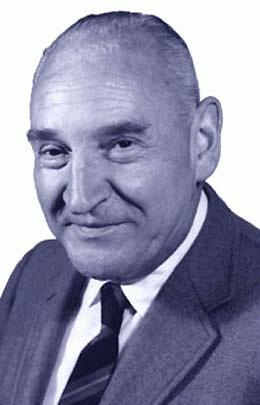On November 17, 1951, the Washington State Supreme Court rules in favor of Group Health in its suit against King County Medical Society. (The society is the local branch of the American Medical Association.) King County Medical Society barred Group Health doctors from membership while declaring nonmembers "unethical." The society caused local hospitals (Renton Hospital, Swedish Hospital, Seattle General, and others) to refuse staff privileges and assistance to Group Health doctors, made it impossible for Group Health doctors to buy insurance in the United States, and in other ways opposed and fought Group Health, which it called a "socialist group." Group Health charged that King County Medical Society engaged in a conscious conspiracy to monopolize contracts for its own doctors. The court ruling in favor of Group Health was unanimous and the court took the extraordinary step of placing King County Medical Society under effective probation for three years, during which any further interference with Group Health would be deemed contempt of court.
Group Health's Just Cause
The opposition of the King County Medical Society made it difficult for Group Health, founded in 1945, to hire new physicians, since the Medical Society refused to certify them. A bourgeoning membership meant more and more patients for a staff increasingly overworked and stressed out. Conditions were made unpleasant but also dangerous when Group Health members were denied essential services by hospitals under the influence of the King County Medical Society.
For example, in 1949, a life was threatened when a Renton member's 15-year-old son caught pneumonia in the midst of winter ice and snow. At Group Health's Renton Branch Clinic, Dr. Raymond Bunker diagnosed the boy and sent father and son to the Renton Hospital. The hospital refused to admit them unless they turned the case over to a non-Group Health doctor. The father refused and drove his son through ice and snow to the Group Health hospital in Seattle. (Fortunately, the boy pulled through.)
Attorney Jack Cluck
Group Health attorney Jack Cluck (d. 1983) believed avidly in the cooperative movement and in cooperative medicine in particular. A key founder of Group Health Cooperative, he was described by one of his law partners as "the brains of the thing, the brains of the whole movement" (Crowley, 16).
Group Health made several attempts to reason with its adversary, and after this failed, gave Attorney Cluck the green light to sue. On November 25, 1949, he filed Group Health's suit in King County Superior Court.
To make his case, Cluck organized Group Health's already overworked staff in an intense research program to document the activities of the King County Medical Society. One doctor joked, "in our abundant time, we had the delightful chore of reading their newsletters and bulletins and things like that" (Crowley, 64). But the intense effort paid off. Many guns were found smoking, including a 1937 society bulletin that announced the necessity of maintaining a monopoly on contract practice, this to be accomplished by declaring "unethical" any outside medical practice. Other examples of unfair competition, conspiracy, and efforts to control the practice of medicine for economic gain eventually filled 23 volumes of evidence.
The Legal Battle
Group Health cleared the first legal hurdle in January 1950 when Judge Roger Meakim found it had sufficient cause for a suit. The trial opened on May 24 before Judge Howard Findley. Cluck's meticulous examination of scores of witnesses, and the society's aggressive defense stretched out over five weeks.
Group Health was stunned when on July 14, Judge Findley dismissed its suit. The judge conceded the facts of exclusion and collusion, but declined to interpret them as an economic conspiracy.
Group Health's board and physicians were reluctant to proceed further, but Cluck convinced them to appeal by promising to limit Group Health's costs to $5,000. He then prepared an appellant's brief that ran to 292 pages of tightly reasoned citation and argument. The Supreme Court heard oral arguments on June 27, and then began deliberations on a case that was considered to have national importance.
The unanimous ruling in favor of Group Health was announced on November 17, 1951. The decision, written by Justice Frederick C. Hamely, began: "This action brings to a head the long and vigorous struggle of the King County Medical Society to curb independent medical and hospital services in King County. In late years the battle has been waged chiefly against Group Health Cooperative of Puget Sound" (Crowley, 65).

